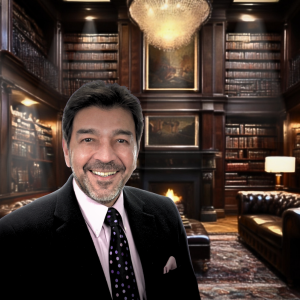Crafting Emotion Through Light, Sound & Motion

A Director’s Journey into the Future of Docudrama Filmmaking
By Joseph M. Arco President, Multimedia Marketing Group Director | Producer | Cinematographer | AI-Augmented Storyteller
A docudrama film is never just a slice of story — it is a distilled exploration of one idea and one defining emotion, shaped into a unique, compelling, self-contained experience. Short-form filmmaking allows the boundaries of narrative to stretch in ways long-form features simply cannot. The best films make this look effortless. But if there is one truth I’ve learned across decades of writing, producing, and directing, it is this: nothing about docudrama filmmaking is easy.
My craft lives in the interplay of light, sound, and motion — timeless tools that have guided filmmakers since the earliest days of cinema. These are the instruments with which I sculpt meaning and emotional architecture. The rhythm and arc of each story guide the viewer, draw them inward, and hold their attention long after the final frame.
Throughout my career, I have produced over 9,000 filmed presentations — serving as Producer, Director, Cinematographer, or Editor across broadcast television, documentary film, historical biography, educational programming, for-profit corporate branding, nonprofit storytelling, and performance-based media. Each project has deepened my belief that films are living emotional experiences crafted with intention and care.
My early broadcast work began in the 1970s and in 1976, when the Bicentennial Commission contracted me to produce two major television initiatives. We the People aired on ABC affiliates, bringing to life 220 of the Founders and early leaders of Illinois through 90-second narrative films. Its companion series, In Retrospect, aired on CBS affiliates with more than 120 segments exploring the pioneering figures who shaped the American heartland.
I continued developing work rooted in impact and community. As Director and Executive Producer of To Guide a Life for the Youth Service Network, I documented the realities of foster care and the power of advocacy. For six years, I created biographical films honoring regional business leaders for the Junior Achievement Business Hall of Fame. In 1997, I produced a 17-part educational series on whole-brain thinking for the Wisdom Channel, and more recently directed I Am the Music: A Rock Operetta, a 30-minute musical documentary exploring the emotional effects of bullying.
As I move forward into 2026, my work continues to evolve — integrating Generative AI, CGI, VFX, and synthetic performance into the filmmaking process. These tools do not replace the fundamentals of storytelling; they expand them. Gen AI allows me to visualize worlds once limited by budget or logistics, to reconstruct historical eras with cinematic authenticity, and to blend human performance with AI-assisted environments, characters, and motion.
From cinematic storyboards and virtual sets to AI-assisted voice work and Synthesia-powered digital ambassadors, these innovations open new creative frontiers while keeping emotional truth at the center. The technology is extraordinary — but the purpose remains unchanged: to craft stories that resonate, illuminate, and endure.
Across genres, decades, and now across technologies, my guiding belief remains constant:
A film is far more than story — it is a sculpted emotional journey. Its truth lives not in what the audience sees, but in what they feel.
Filmmaking is my artform. Story is my architecture. Emotion is my compass. And as we enter a new era of hybrid filmmaking — human imagination enhanced by Generative AI — my mission remains the same: to create meaningful work that lingers long after the screen fades to black.
P.S.
To see how this creative evolution comes together on screen, watch the MMG documentary From Pixels to Perception, exploring the future of CGI, VFX, and Gen AI–augmented storytelling:
https://mmg-1.com/from-pixels-to-perception/
Categories
Recent Posts
- Crafting Emotion Through Light, Sound & Motion November 24, 2025
- Generative AI Isn’t a Shortcut — It’s a New Artistic Medium November 20, 2025
- Part 2: How Film Creates and Shapes Culture September 24, 2025
- Film as Mirror and Molder September 23, 2025
- 50 Years Since Altair BASIC: September 16, 2025
- Guides to the Past: The Story of Rockford’s Elks Lodge #64 September 15, 2025
- Generative AI: The Paint Tube of Our Era September 2, 2025
- From Script to Screen: Generative AI and the Transformation of Film Production August 19, 2025
- The Right Time for AI Adoption in Business August 11, 2025
- Unlocking Success Through Expert Guidance August 11, 2025
Recent Comments